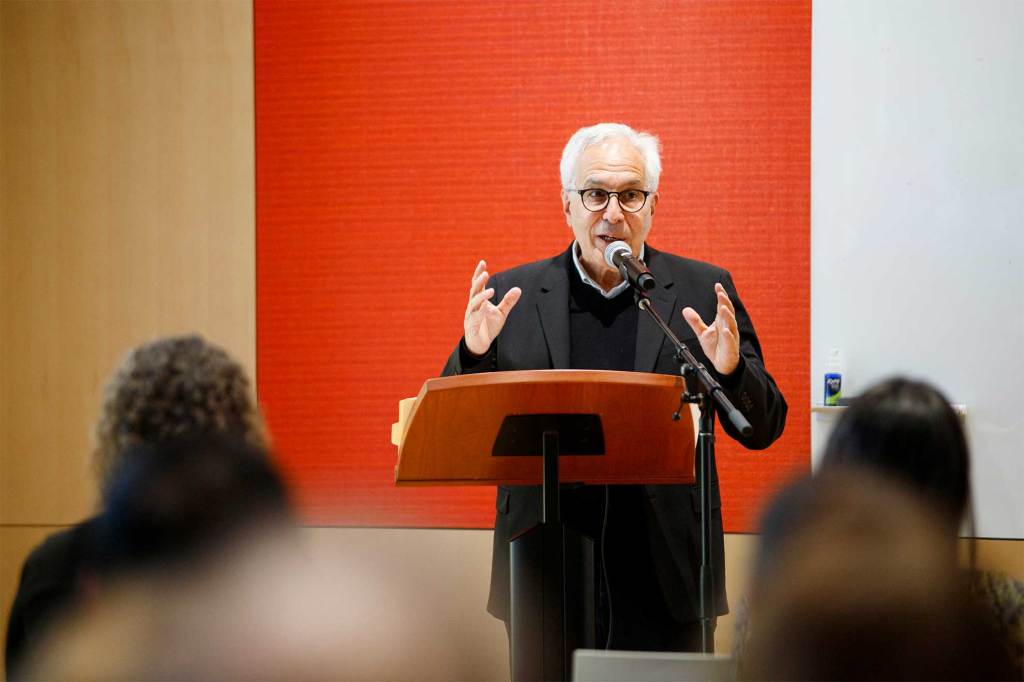Rowland Institute celebrates new beginnings in a new space

Rowland Fellow Oluwasegun Wahab presents on nanoscale electrochemistry for energy science.
Photos by Grace DuVal
While maintaining its mission of cultivating high-risk, high-reward research, the Rowland Institute at Harvard welcomed change at a symposium that celebrated its transition to a new home in the heart of campus.
The Oct. 23 symposium featured remarks from institute and campus leaders and former Rowland Fellows and concluded with brief overviews of the seven current Fellows’ research agendas.
Founded in 1980 by Polaroid inventor and longtime Harvard benefactor Edwin Land, the Rowland Institute merged with Harvard in 2002 and had until recently been housed in its original building near Kendall Square. Over the summer, the Rowland Institute moved into the newly renovated David E. and Stacey L. Goel Quantum Science and Engineering Building at 60 Oxford St., along with the Harvard Quantum Initiative.

Now together on campus for the first time, Rowland Fellows are located in adjacent spaces, with its physical scientists and chemists in the Goel Building, and its life scientists in the nearby Northwest Building. Staff and support infrastructure, including machine and wood shops and computational and electrical engineers, are in two additional spaces on Oxford Street.
“All of us are very, very happy to have you here as colleagues,” said FAS Dean of Science Jeff Lichtman in his opening remarks. “We hope that the rich intellectual environment you are joining will add new possibilities for collaboration and also for contemplation – for thinking about the future as you tackle genuinely hard problems in your research.”
In keeping with Land’s original ambition of fostering science free from the usual restraints of university bureaucracy, the Rowland Fellows program provides early-career scientists with generous resources and technical staff support for independent research across many disciplines. Most notably, Fellows are meant to engage in ambitious, even risky work that traditional funding agencies would typically not support.
“This fellowship is the best money you can get, to go out and do something that you know the NSF will reject,” said former Rowland director Frans Spaepen.

Attendees heard two talks by Rowland alumni. The first was by Kristin Lewis, Principal Technical Advisor for Energy Analysis and Sustainability at the U.S. Department of Transportation’s Volpe Center, who studied parasitic plants while at Harvard and is a leading expert in sustainable fuels and climate resilience in the transportation sector.
Next was Ozgur Sahin, a professor at Columbia University, who studies nanoscale physical and chemical properties of biological materials and shared recent work on bacterial spores as power generators.
Each of seven current Rowland Fellows ended with flash talks introducing their research, which ranges from quantum materials and microbial genetics to light pollution and chemical kinetics.
Learn more about the Rowland Institute at Harvard.





